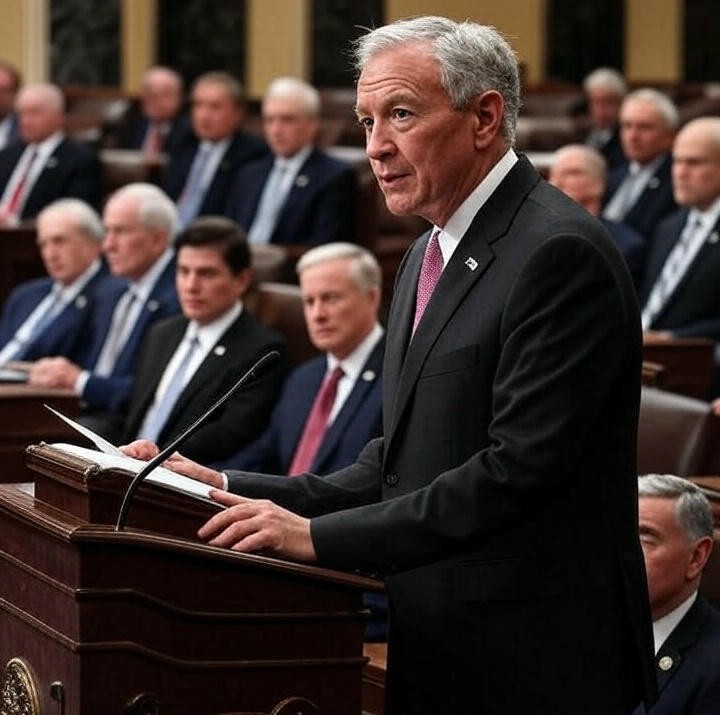The U.S. Senate has taken a big step forward in regulating the cryptocurrency industry by passing a new law focused on stablecoins—a type of digital currency designed to hold a stable value by being tied to traditional money like the U.S. dollar. This is the first ever federal framework for stablecoins and it’s being seen as a major victory for the crypto sector. The goal of the law is to increase financial transparency, protect investors and maintain economic stability.

What Are Stablecoins?
Stablecoins are digital currencies that are usually tied (or “pegged”) to a traditional currency like the U.S. dollar. This means 1 stablecoin is meant to equal $1. Popular examples include:
- USDT (Tether)
- USDC (USD Coin)
These coins are used widely in cryptocurrency trading, remittances and even by some businesses for international payments. Their value does not fluctuate much making them more stable than other cryptos like Bitcoin or Ethereum.
What Did the Senate Do?
The U.S. Senate passed a landmark bill that creates the first federal rules for dollar backed stablecoins. Until now stablecoins were mostly regulated by individual states leading to confusion and lack of oversight.
Key Features of the Bill:
- Federal Oversight
The bill puts stablecoins under federal regulation allowing national agencies to monitor how these digital dollars are issued and managed. - Transparency Rules
Issuers must disclose their reserves (the assets they hold to back the coins). If they say 1 coin equals $1 they must have real dollars or equivalent assets to prove it. - Criminal Penalties
The bill includes criminal penalties for false reporting or failing to disclose financial reserves. This aims to stop fraud and protect users. - Licensing Requirements
Companies issuing stablecoins must apply for a federal license. This will help ensure that only trustworthy well capitalized firms can operate. - Consumer Protections
The law includes measures to protect consumers if a stablecoin company fails or commits fraud.
Why Is This Important?
This bill brings much needed clarity and trust to the crypto space. For years stablecoins have played a critical role in crypto markets but there were few consistent rules governing their use.
With this new law:
- Investors and businesses can feel more confident using stablecoins.
- Scammers and poorly managed projects will face serious consequences.
- U.S. leadership in digital finance is strengthened keeping the country competitive globally.
This bill also responds to past scandals like the collapse of TerraUSD a stablecoin that lost its $1 value wiping out billions of dollars in investor funds. The new framework is designed to prevent such disasters.
Trump’s Entry into Stablecoins: USD1
As this regulatory framework is being built Donald Trump’s crypto ventures are also making headlines.
What Is USD1?
Trump’s company World Liberty Financial has launched a new U.S. dollar backed stablecoin called USD1. This coin is meant to maintain a stable $1 value and could be used for everyday transactions online purchases and even political donations.
Why This Matters:
- High-profile Support
Trump’s involvement brings attention and legitimacy to stablecoins. As a former U.S. President and 2024 presidential candidate his support can shape public and political opinion. - Financial Impact
Reports say Trump earned $57.4 million from crypto ventures last year a part of his $600 million annual income from various businesses. - Crypto Policy Influence
With Trump’s team entering the stablecoin space he may push for pro crypto regulations if he returns to office. - Public Awareness
A stablecoin backed by a famous figure could bring mainstream interest to digital currencies especially among his supporters.
What Happens Next?
For the Crypto Industry:
The new law offers a clear path forward. Companies now know what’s expected and can operate within legal limits. This reduces uncertainty and encourages institutional investment in crypto markets.
For Consumers:
People who use stablecoins whether for trading, remittances or savings—can trust that coins issued under the new law are backed by real value and supervised by the government.
For Politicians:
Stablecoins are now a major political issue. With Trump launching USD1 and gaining millions from crypto other candidates may also take positions on digital finance. This could make crypto policy a hot topic in the 2024 U.S. elections.
Challenges Ahead
While the bill is a major step there are still some challenges:
- Implementation: Regulatory agencies need to set up the systems to monitor and enforce the law.
- State vs. Federal Conflicts: Some states have their own crypto rules. Harmonizing these with the new federal law may be tricky.
- Global Coordination: Stablecoins can move across borders. The U.S. may need to work with other countries on international crypto rules.
Conclusion
The U.S. Senate’s new law on stablecoins marks a turning point for the cryptocurrency world. It brings rules, safety and trust to a part of the industry that is growing fast and affecting millions.
At the same time Donald Trump’s launch of his own stablecoin (USD1) shows that digital finance is now mainstream and political. As crypto continues to evolve one thing is clear: Stablecoins are no longer just a tech experiment they are part of the future of money.
